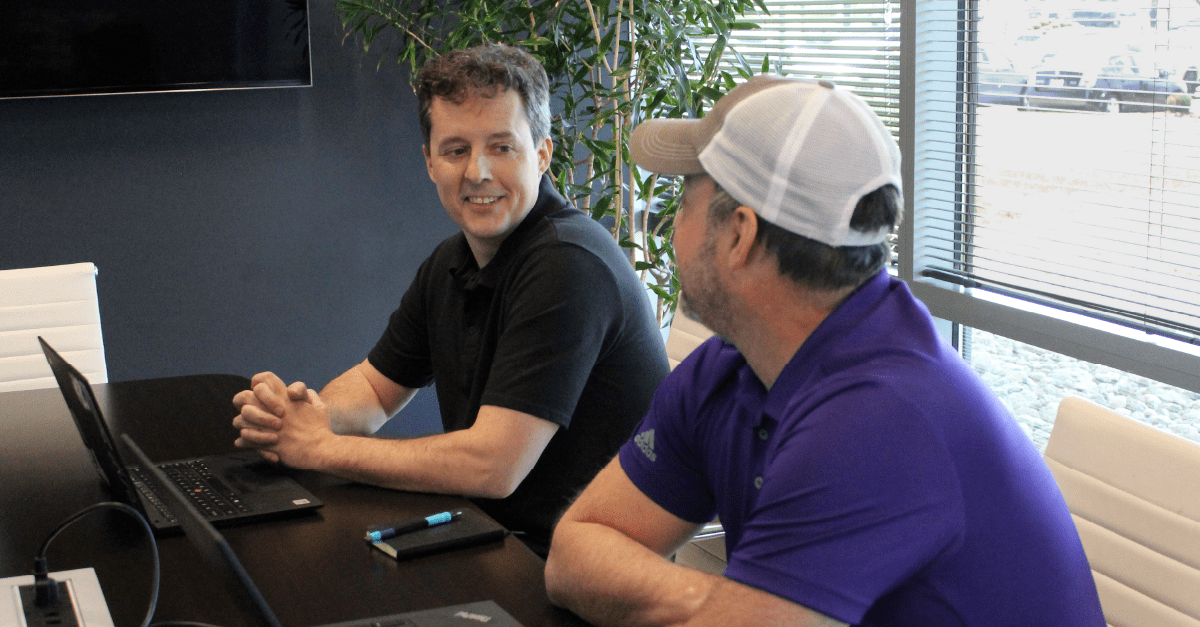AI is no longer a novelty. It’s a necessity. But that doesn’t make it easy, cheap, or guaranteed to deliver results.
For CEOs, the question has moved beyond ‘What can AI do?’ to something much harder: “What return should I expect, and what will it take to get it?”
In boardrooms and strategy sessions, artificial intelligence is shifting from experimental hype to operational reality. The most forward-thinking CEOs aren’t chasing quick wins. They’re making deliberate investments and rethinking ROI in terms of speed, scale, and long-term capability.
Here’s how today’s CEOs are redefining ROI in the age of AI, and what it takes to get ahead. Discover why ‘fast and cheap’ is often a trap, how to align AI with real business value, and what it takes to build lasting leverage in an AI-driven world.
Summary
1. Fast and Cheap Is a Myth That Costs More Than You Think
The idea of AI as a shortcut, a way to build faster and cheaper, is everywhere. And it’s not entirely wrong. But it’s rarely the whole story.
“AI can bring things to life quicker than we’ve ever seen,” says David Galownia, CEO at Slingshot. “But as a CEO, you can’t think in terms of cheap because you’re not going to create meaningful change within your organization.”
Slingshot’s CIO Chris Howard agrees. While AI tools like CoPilot and Cursor can accelerate prototyping or coding, they don’t eliminate the need for investment. “You have to invest in it. You have to invest money. You have to invest people’s time. You have to invest in learning, leadership, everything.”
Fast and cheap might get you a demo, but it won’t deliver transformation. And that’s what most CEOs are after.
2. The ROI Conversation Hasn’t Changed, But the Tools Have
Despite the AI boom, one thing remains unchanged: CEOs continue to chase ROI. However, the toolbox now looks quite different.
“You’re still thinking in terms of investment,” David explains. “It’s less about cheap. It’s about ROI. What’s the time to market? What’s the return?”

3. Strategic AI Starts with Clear Problems and Real Metrics
It sounds simple, but it’s often skipped: defining the problem and knowing how you’ll measure success.
“There’s a lot of messiness right now with AI,” David says. “Solutions looking for a problem instead of starting with the problem we want to solve.”
That kind of backwards thinking is costly, especially when AI tools make it easier than ever to prototype or launch quickly. “Even a fast and cheap investment is still a waste of money if you’re not solving a real problem. Start by identifying one persistent, painful problem. Then ask: What would AI need to prove to be worth the investment?” adds Chris.
The CEOs seeing real ROI are the ones who stay close to the fundamentals: clarity on customer needs, discipline around metrics, and a willingness to test before scaling.
4. The True Cost of AI Is Organizational, Not Just Technical
Building with AI isn’t just a technical challenge.; it’s also a strategic one It’s an organizational one. And that’s where many companies fall short.
“If you’re a company and you say, ‘here’s a $2,000 budget and everyone spends an hour a week,’ you’re not going to get anything done,” David says. “You have to invest enough where you feel it.”
That means training, leadership buy-in, and a commitment to learning. “You’re going to have to empower your team, skill up on AI, train yourself,” Chris adds. “AI isn’t a shortcut. It’s an amplifier. You still need strategy, leadership, and investment.”
5. Smart CEOs Are Creating Space to Explore, Fail, and Learn
The best CEOs aren’t looking for instant wins. They’re building systems to explore, test, and iterate. And AI makes that more accessible than ever.
“Now there are things that are more approachable,” David says. “More ideas you can test for the same amount of money.”
AI changes the economics of experimentation. It enables organizations to move faster and test more ideas without exceeding their budget. But the mindset matters.
“You still have to invest,” Chris emphasizes. “But now, for that same investment, you might get 2 or 3 or 4 shots instead of one.”

That shift, from single bets to structured exploration, is where real ROI starts to emerge.
Final Thought: The CEOs Who Win with AI Aren’t Looking for Cheap
They’re looking for capability. For leverage. For more innovative paths to impact.
AI isn’t a shortcut. It’s an accelerator. And the CEOs who treat it as such are the ones redefining what’s possible, not just in terms of cost, but also in terms of value.
The real question isn’t ‘Should we use AI?’ It’s ‘Where are we willing to invest with intention?’ That’s where the ROI begins.
Want to move Fast with AI?

Written by: Savannah Cherry
Savannah is our one-woman marketing department. She posts, writes, and creates all things Slingshot. While she may not be making software for you, she does have a minor in Computer Information Systems. We’d call her the opposite of a procrastinator: she can’t rest until all her work is done. She loves playing her switch and meal-prepping.

Expert: David Galownia
David excels at propelling Slingshot towards their goals and oversees the strategic direction of the company. He’s been described as ‘intense, driven, caring, and passionate’ both at work and play. At work, he enjoys watching his team explore, imagine, and reinvent to do the best by their clients. At play, he drives Karts at insanely high speeds and scares his wife half to death. It’s all or nothing. Which means he gives it all.

Expert: Chris Howard
Chris has been in the technology space for over 20 years, including being Slingshot’s CIO since 2017. He specializes in lean UX design, technology leadership, and new tech with a focus on AI. He’s currently involved in several AI-focused projects within Slingshot.




